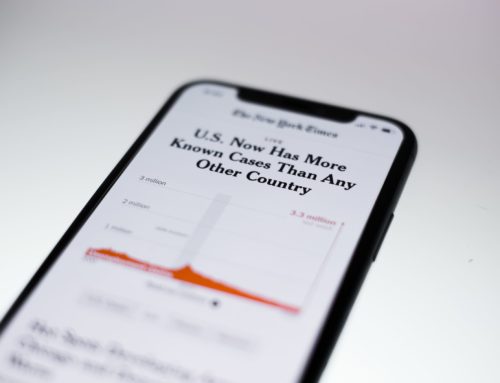More Than Just a Conduit: Interpreters as Team Members in Mental Health
Tracy Epperson, MD
There is an old saying that the tree which bends with the wind does not break. Our current mental health model is broken, and the only way to save it is for the members of the team—both mental health providers and interpreters, to learn to bend.
The needs of the average Deaf patient in a mental health setting are significantly more complex than the current paradigm allows. We in the field are fully aware that Deaf culture is as rich and diverse as any, though it is often overlooked or misunderstood, especially by the hearing-centered medical model of deafness. Stressors inherent in the Deaf community, such as communication oppression and other types of culturally specific trauma, make the typical treatment model for hearing patients inadequate and ineffective. Likewise, the typical interpreting paradigm of showing up, acting only as a communication facilitator, and leaving, is also ineffective.
Competency and the Lack Thereof
Many national organizations, including the American Psychological Association, require that those who are practicing outside their level of expertise (based on multiple factors, but notably language and culture) seek supervision and training in order to become competent. Despite an increased need for competent, effective mental health treatment, less than 2% of Deaf persons struggling with mental illnesses actually receive the care they need and fewer than 3% of providers offer mental health services to people who are Deaf. Of this small minority of providers, very few would be considered competent in culturally affirmative and linguistically appropriate treatment of Deaf persons.
Crucial Communication
It is likely because of this lack of cultural competence coupled with inadequate communication between patient and provider that there often exists a sense of fear and mistrust from Deaf individuals toward their hearing providers. In a study done on Deaf perspectives of healthcare, it was found that “fear, mistrust, and frustration,” were common in Deaf patients’ health care experiences. Any experiences described as positive were characterized by the presence of medically experienced certified interpreters, health care practitioners with sign language skills, and/or practitioners who made efforts to improve communication.
Neil Glickman observed that disempowering Deaf people in communication, ultimately leading to communicative isolation, is a prominent form of oppression against the Deaf community. It can be assumed then that care providers who are not competent in Deaf culture and/or do not provide adequate communication to their Deaf patients are in actuality displaying this type of oppression in their efforts, which are intended to treat.
An argument can be made, therefore, that a primary need for effective (read: competent) treatment of Deaf patients is adequate communication access. Since most providers are non-signing, an effective support system must then include skilled interpreters who are knowledgeable of mental health and the unique manifestations of symptoms in a Deaf person. It should also be noted that a “support system” denotes multiple parts working in tandem. The interpreter in a successful treatment setting is not separate from the system, but rather a member of the treatment team.
Unfortunately, a large majority of Deaf patients in mental health settings have inadequate language, a striking majority being deemed dysfluent—that is, they are not fluent in any language, including ASL. Studies have found that as many as 75% of Deaf mental health inpatients possess some form of language dysfluency (compare that to only a handful of cases of hearing people with dysfluent language, EVER). Dysfluency impacts all facets of life, including cognition and psychosocial experiences and skills, and interferes with normal healthy attachment. Some language disparity exists even into adulthood—a study from 2009 found that even very educated Deaf adults demonstrated insufficient health literacy. The general population of Deaf sign language users is therefore likely to be at an even greater risk of inadequate health literacy and subsequently, poorer overall health.
Filling in the Gaps
Often providers are unaware of this deficit in health-related knowledge, which can lead to misunderstandings and worse, misdiagnoses. It falls then to the interpreter to attempt to educate unaware providers on these potential deficits, as well as other factors which may potentially confound diagnosis, such as cultural differences and the prevalence of language dysfluency in the Deaf community.
As the team member who is an expert in the language and culture of the patient, an interpreter in a mental health setting must be skilled enough to recognize when the presentation of a patient is consistent with their cultural background, and whether the communication being displayed is a symptom of mental illness or instead merely insufficient language, then adequately convey this information to the provider—all without postulating a psychiatric diagnosis. Not an easy task, yet a vital one.
Dysfluency or Disordered?
In order to make helpful and accurate linguistic descriptions, it is beneficial for interpreters to be familiar with common features of language dysfluency, as well as the thought disorganization of mental illness, in order to help differentiate between the two and better describe nuances that will help the provider identify the likely etiology of difficult language. In Mental Health Interpreting with Dysfluent Deaf Clients, Neil Glickman identifies 5 language errors common to language dysfluency:
-
Impoverished/limited vocabulary, with incorrect use of many signs,
-
Inability to correctly sequence events (lack of time/tense indicators),
-
Spatial disorganization, such as signing in a limited space without shifts to differentiate subjects,
-
Incorrect or missing syntax, such as incorrect grammar, pronouns with no preceding noun established,
-
A mixture of gestures with sign, not for emphasis or embellishment, but due to inadequate vocabulary.
Likewise, there are commonly seen language abnormalities in mental illness which can be found in both hearing and Deaf populations, such as looseness of association (unrelated words or phrases strung together), echolalia (repeating back what the interviewer has said/signed), and incongruent affect (emotional display mismatched to language, such as signing, “I’m very excited,” with an expressionless face).
However, there are also symptoms indicative of psychosis which can be common in nonpsychotic Deaf patients, leading to potential misdiagnosis by an unaware provider. For example, because ASL involves more intense body language and facial expressions than are present in hearing conversation, it is not unusual for a Deaf person to display what a hearing practitioner might label “affect lability,” and the deficit of healthcare knowledge in the Deaf community may be misinterpreted as pathological. This again is where information provided by the interpreter is so vital. But how to convey that information to the provider?
More Than the Message
Robert Pollard has identified strategies to help with conveying difficult language to providers, and in his Mental Health Interpreting Training curriculum, he offers some valuable examples of how to utilize each of the four strategies:
-
First person—the method we most often use as interpreters, in which we voice as the Deaf client.
-
Third person—sometimes necessary to avoid escalating a volatile encounter, in which we use “he is saying,” or “she said,” despite being taught during our training never to do so, and cringing the entire time we are forced by circumstances to use it.
-
Glossing—word for word interpreting, typically reserved for completely incoherent language, and only rarely useful in mental health. It carries the risk of making the signer sound less educated or more psychotic than they actually are, and as such often requires educating the listeners regarding ASL syntax.
miscommunication and mistrust, can lead to patients seeking care from multiple providers, exacerbating this discontinuity.
-
Descriptive—describing the language for the provider, such as whether the person is lacking proper use of pronouns or time indicators (which can indicate dysfluency) or whether the person is stringing random, unrelated signs together (which could indicate disorganized thought).
The latter strategy can be very useful in mental health evaluations, which often target a person’s presentation more than content. Interpreters can also use a combination—providing a summary of what is being said via one of the first three strategies, along with descriptive information regarding how the message is being delivered. The descriptive information should also include cultural mediation/education as to how the patient’s presentation compares with the typical Deaf population and whether the language they are using is representative of fluent ASL users or not. One example is eye contact. What is acceptable and even expected eye contact in the Deaf world may be considered overly intense eye contact in the hearing world, and mistaken as a sign of altered mental status. Likewise, a Deaf person who makes the fleeting eye contact, which common in hearing culture, is actually displaying atypical behavior for someone who is culturally Deaf. Again, it is important that the interpreter provide this linguistic information (“the signs they are using appear disjointed and unrelated”) without asserting a diagnostic opinion (“this person is signing psychotically”). The interpreter can then clarify whether the pattern of language used is typical for someone with minimal language skills, whether the affect displayed is typical of a member of the Deaf community, and so on.
More Than Just a Conduit
Interpreters often bear the additional burden of being the only continuity in Deaf patients’ mental health care path, as all too frequently continuity of care is glaringly absent in their treatment. Previously discussed confounding factors such as miscommunication and mistrust can lead patients to seek care from multiple providers, exacerbating this discontinuity. Since the interpreting community is small, one interpreter may interpret for the same patient at multiple facilities, which may not communicate with one another, resulting in the interpreter having much more knowledge of the patient than their current providers.
In our training as interpreters, confidentiality is drilled deeply into our very souls, so much so that considering ourselves a member of the team and more than just a conduit of communication may feel sacrilegious. However, the RID Code of Professional Conduct states that each assignment requires its own level of confidentiality and that information is to be shared on an “as needed” basis. In a mental health setting, more information may need to be shared than in a typical visit to a PCP for a cold. In some cases, not sharing vital information would be harmful to the patient’s treatment.
Granted, acting as a “liaison” goes far beyond the usual and accepted interpreter duties, and brings with it many potentially difficult ethical situations. Do I tell this facility the name of the previous facility where the patient was treated since they are unable to recall it? Do I tell the doctor this patient is allergic to the Haldol he just prescribed because the patient incorrectly said they had no allergies? The list of potential ethical dilemmas is endless, and I would argue that each requires answering on a case-by-case basis with the one overarching tenet of healthcare kept firmly in mind: First, do no harm.
References
Black P.A. & Glickman N.S. (2006). Demographics, psychiatric diagnoses, and other characteristics of North American Deaf and hard-of-hearing inpatients. Journal of Deaf Studies and Deaf Education, 11(3), 303-321.
Crump, C. & Glickman, N. (2011). Mental Health Interpreting with Language Dysfluent Deaf Clients. Journal of Interpretation, 21(1), Article 3.
Downey, G. (2010). Life without Language. Neuroanthropology. Retrieved from neuroanthropology.net/2010/07/21/life-without-language/.
Glickman, N.S., & Gulati, S. (Eds.) (2003). Mental health care of deaf people: A culturally affirmative approach. Lawrence Erlbaum Associates Publishers.
Pollard, R. Q. & Barnett, S. (2009). Health-related vocabulary knowledge among deaf adults. Rehabilitation Psychology, 54(2), 182-185.
Raifman, L.J., & Vernon, M. (1996). Important implications for psychologists of the Americans with Disabilities Act: Case in point, the patient who is deaf. Professional Psychology: Research and Practice, 27(4), 372–377.
Steinberg, A.G., Barnett, S., Meador, H.E., Wiggins, E.A. & Zazove, P. (2006). Health Care System Accessibility. Journal of General Internal Medicine, 21, 260-266.
 Dr. Tracy Epperson is a licensed resident physician in the psychiatry program at Unity Health in Searcy, Arkansas. She received her medical degree at the age of 46 after 2 decades of observing the extreme need for qualified providers familiar with Deaf culture and fluent in ASL over the course of her interpreting career, which began in 1998. She received her Bachelor’s degree in Interpreting from the University of Arkansas at Little Rock, and her medical degree from the University of Arkansas for Medical Sciences. She enjoys spending time outdoors, especially with her amazing husband and overly handsome sons.
Dr. Tracy Epperson is a licensed resident physician in the psychiatry program at Unity Health in Searcy, Arkansas. She received her medical degree at the age of 46 after 2 decades of observing the extreme need for qualified providers familiar with Deaf culture and fluent in ASL over the course of her interpreting career, which began in 1998. She received her Bachelor’s degree in Interpreting from the University of Arkansas at Little Rock, and her medical degree from the University of Arkansas for Medical Sciences. She enjoys spending time outdoors, especially with her amazing husband and overly handsome sons.







Wow, amazing blog format! How lengthy have you been running a
blog for? you made blogging glance easy. The whole glance of your site is fantastic, as neatly
as the content!